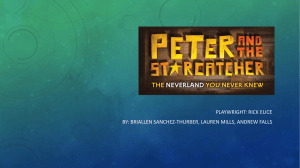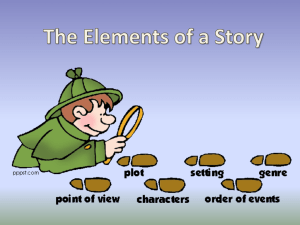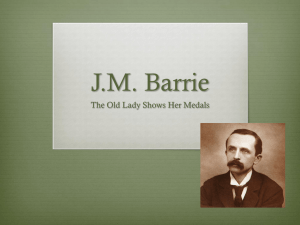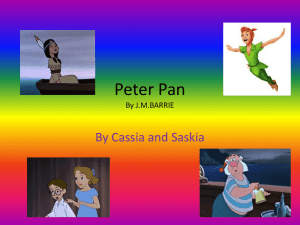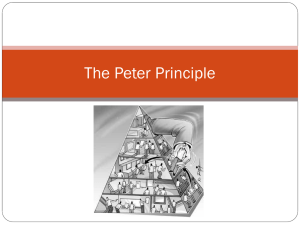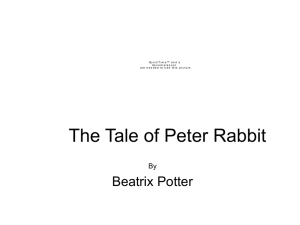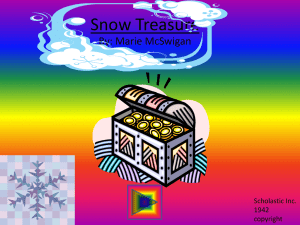Peter Pan
advertisement
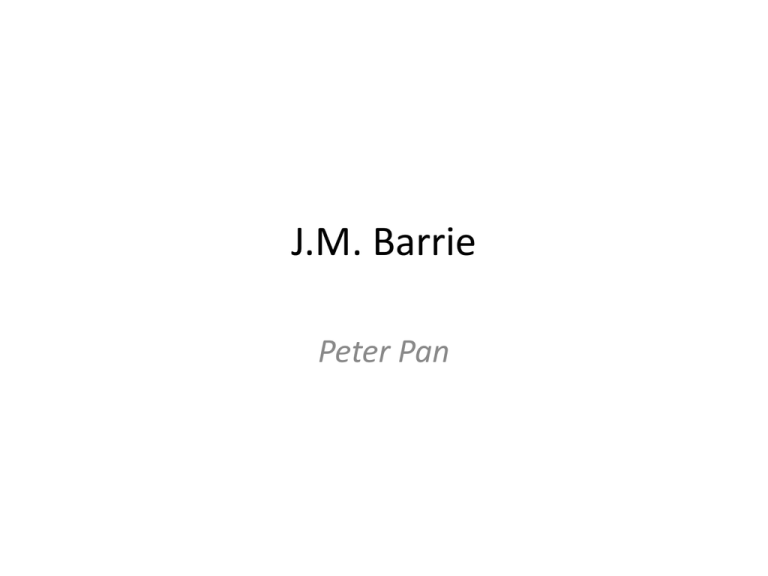
J.M. Barrie Peter Pan Background to the session • The first session on Peter Pan looks at how language sets up ideas about childhood that might be surprising. • This is especially true when claims about the text are examined, namely that the book represents an uncomplicated idea of childhood. • For more on these ideas, please read The Case of Peter Pan: Or the Impossibility of Children's Fiction By Jacqueline Rose. The history of the story • The book was originally called The Little White Bird. • This was written in the 1902 as a fictionalised version of Barrie's relationship with the Llewelyn Davies children. • The character of Peter Pan was based on Peter Llewellyn Davies and the God Pan. • This character was next used in the play Peter Pan, or The Boy Who Wouldn't Grow Up 1904 Other versions… • This was later was adapted and expanded and published in 1911 as Peter and Wendy. • Chapters 13–18 of The Little White Bird were republished in 1906 as Peter Pan in Kensington Gardens • Since this story has appeared in many versions – and often as a play – the story has been used as pantomime. • This is something that we explored in the second session on PP. Family • Peter does not know his parents. In Peter Pan in Kensington Gardens, Barrie wrote that Peter left as an infant • Seeing the window closed and a new baby in the house when he returned some time later, he assumed they no longer wanted him. • After Peter flew away to Kensington Gardens, he returned to find his parents had forgotten about him. They had another child (the gender of Peter's sibling is revealed to be another boy in Peter and Wendy). The inspiration for Peter Pan • The Llewelyn Davies boys were the sons of Arthur (1863– 1907) and Sylvia Llewelyn Davies (1866–1910) (daughter of cartoonist/writer George du Maurier). • Barrie became their guardian following the middle-age deaths of their parents, and they were publicly associated with Barrie and with Peter Pan for the rest of their lives. • They served as the inspiration for the characters in Peter Pan and the other boys of J. M. Barrie's Neverland works, and several of the main characters were named after them. • The three oldest served in the British military in World War I. Two of the brothers died in their early twenties (one in combat, the other drowning), and a third committed suicide when he was 63. The ideas of Childhood that we located: The book is complicated. • Parental roles are exchanged. • Females are both worshipped and ridiculed • The beginning and the ending are arbitrary. • The questions about mortality help to set up nostalgia in the book The book is funny. • It offers parody and grotesque. • It ‘sounds’ like a pantomime – with examples of wordplay and direct instruction. • The ongoing action implies that the battles and adventure will never stop. This is how nostalgia is located in the book.
